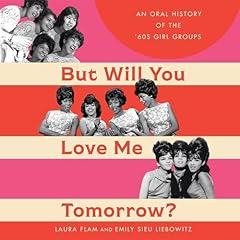
The Big Time
How the 1970s Transformed Sports in America
No se pudo agregar al carrito
Solo puedes tener X títulos en el carrito para realizar el pago.
Add to Cart failed.
Por favor prueba de nuevo más tarde
Error al Agregar a Lista de Deseos.
Por favor prueba de nuevo más tarde
Error al eliminar de la lista de deseos.
Por favor prueba de nuevo más tarde
Error al añadir a tu biblioteca
Por favor intenta de nuevo
Error al seguir el podcast
Intenta nuevamente
Error al dejar de seguir el podcast
Intenta nuevamente
$0.00 por los primeros 30 días
POR TIEMPO LIMITADO
Obtén 3 meses por US$0.99 al mes
La oferta termina el 16 de diciembre de 2025 11:59pm PT.
 Exclusivo para miembros Prime: ¿Nuevo en Audible? Obtén 2 audiolibros gratis con tu prueba.
Exclusivo para miembros Prime: ¿Nuevo en Audible? Obtén 2 audiolibros gratis con tu prueba.
Solo $0.99 al mes durante los primeros 3 meses de Audible Premium Plus.
1 bestseller o nuevo lanzamiento al mes, tuyo para siempre.
Escucha todo lo que quieras de entre miles de audiolibros, podcasts y Originals incluidos.
Se renueva automáticamente por US$14.95 al mes después de 3 meses. Cancela en cualquier momento.
Elige 1 audiolibro al mes de nuestra inigualable colección.
Escucha todo lo que quieras de entre miles de audiolibros, Originals y podcasts incluidos.
Accede a ofertas y descuentos exclusivos.
Premium Plus se renueva automáticamente por $14.95 al mes después de 30 días. Cancela en cualquier momento.
Compra ahora por $35.09
-
Narrado por:
-
Sean Runnette
Every decade brings change, but as Michael MacCambridge chronicles in THE BIG TIME, no decade in American sports history featured such convulsive cultural shifts as the 1970s. So many things happened during the decade—the move of sports into prime-time television, the beginning of athletes’ gaining a sense of autonomy for their own careers, integration becoming—at least within sports—more of the rule than the exception, and the social revolution that brought females more decisively into sports, as athletes, coaches, executives, and spectators. More than politicians, musicians or actors, the decade in America was defined by its most exemplary athletes. The sweeping changes in the decade could be seen in the collective experience of Billie Jean King and Muhammad Ali, Henry Aaron and Julius Erving, Kareem Abdul-Jabbar and Joe Greene, Jack Nicklaus and Chris Evert, among others, who redefined the role of athletes and athletics in American culture. The Seventies witnessed the emergence of spectator sports as an ever-expanding mainstream phenomenon, as well as dramatic changes in the way athletes were paid, portrayed, and packaged. In tracing the epic narrative of how American sports was transformed in the Seventies, a larger story emerges: of how America itself changed, and how spectator sports moved decisively on a trajectory toward what it has become today, the last truly “big tent” in American culture.
Los oyentes también disfrutaron:




















Reseñas de la Crítica
“Michael MacCambridge is one of America’s finest chroniclers and when he told me he was turning his eye to the 1970s, the decade of my childhood, I couldn’t have been more thrilled. He delivers exactly what I hoped he would, a book brimming with nostalgia and fun, filled with all the marvelous names that shaped my life as a sports fan as well as shaping sports as we now know them.”—Joe Posnanski, bestselling author of The Baseball 100
“If you remember how great sports were in those days, THE BIG TIME will remind you, and if you doubt how great, this book will show you.”—Roy Blount, Jr., author, About Three Bricks Shy of a Load
“Michael MacCambridge’s THE BIG TIME is a meticulously researched, beautifully written and wonderfully entertaining walk down memory lane. The ‘70s were such a fascinating decade in sports and culture, and this book brings all the characters and moments to life in riveting detail. We know that time travel doesn’t exist, but this book sure comes close.”—Christine Brennan, USA Today sports columnist and author of the best-selling Inside Edge
Also, prepare to hear a lot of the University of Texas. I am not sure why. The author goes on deep dives into UT sports, but the stories don't seem to go anywhere, be very important, or contribute to the story.
I do not mean to be critical in any way. I am simply furthering the discussion the author did a great job of starting. If you love sports, this book is well worth the read and I highly recommend it.
Good Effort But Missed Part of the Story
Se ha producido un error. Vuelve a intentarlo dentro de unos minutos.


